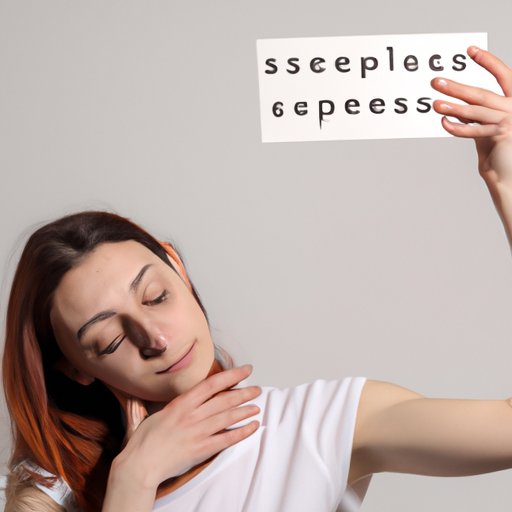Why Do I Move So Much in My Sleep? Understanding Restless Sleep
Do you often wake up feeling exhausted, no matter how long you slept? Does your partner complain about your constant tossing and turning in bed? If so, you may be experiencing restless sleep. Restless sleep, characterized by frequent movement and disruptions during sleep, affects millions of people worldwide. In this article, we will explore the science behind restless sleep, its impact on health, and simple tips to overcome it, so you can wake up feeling refreshed and energized.
The Science Behind Your Restless Nights: Why do You Move so Much in Your Sleep?
Restless sleep occurs when the body and brain fail to transition through the stages of sleep smoothly. During sleep, the body goes through several cycles, each lasting approximately 90 minutes. These cycles are divided into two types of sleep: rapid eye movement (REM) and non-rapid eye movement (NREM).
Muscle movement and brain waves are essential in ensuring smooth transitions between the different sleep stages. When these transitions are disrupted, it can result in restless sleep. While the exact cause of sleep disruptions is unknown, medical conditions, medications, and lifestyle factors can contribute to restless sleep.
Is Your Restless Sleep Affecting Your Health? Understanding the Causes Behind Restless Movement in Sleep
Restless sleep can have detrimental effects on a person’s health, both physically and mentally. Studies have shown that people with restless sleep have a higher risk of developing chronic conditions such as heart disease, diabetes, and obesity.
Medical conditions such as sleep apnea, restless legs syndrome, and periodic limb movement disorder can cause restless sleep. Additionally, medications such as antidepressants and antihistamines, as well as substance abuse, can also contribute to restless sleep.
Trouble Sleeping? Here’s What Could be Causing Your Restless Nights
Lifestyle factors such as caffeine, alcohol, and nicotine can also negatively impact sleep quality. Consuming these substances too close to bedtime can disrupt sleep and cause restlessness. Additionally, poor sleeping environments, such as a noisy or uncomfortable bedroom, can lead to restless sleep.
Chronic pain or illness can also cause restless sleep. People living with conditions like arthritis, fibromyalgia, or chronic fatigue syndrome often experience disrupted sleep due to pain or discomfort.
The Psychological Reasons Behind Restless Sleep: How Stress and Anxiety Affect Your Sleeping Habits
Psychological factors like stress and anxiety can manifest in sleep movements. People experiencing high levels of stress or anxiety may find themselves unconsciously shifting positions throughout the night, leading to restless sleep. Mental health conditions like depression and post-traumatic stress disorder (PTSD) can also impact sleep quality and lead to restless sleep.
Simple Tips to Get a Better Night’s Sleep: Understanding and Overcoming Restless Movements in Sleep
There are several self-help techniques that can help overcome restless sleep. Relaxation techniques like meditation, deep breathing exercises, and progressive muscle relaxation can help calm the mind and body before bed. Cognitive-behavioral therapy, or CBT, can also be effective in treating insomnia caused by psychological factors.
Making lifestyle changes such as exercising regularly, eating a balanced diet, and establishing a regular bedtime routine can help promote restful sleep. Avoiding caffeine, alcohol, and nicotine before bed can also reduce the likelihood of restless sleep.
Uncovering the Connection Between Sleep Disorders and Move Restlessness: The Latest Research
Recent medical research has shed light on the connection between sleep disorders and restless sleep. Studies have identified specific brain regions involved in regulating movements during sleep and how they are affected by sleep disorders. Treatments like medication, cognitive-behavioral therapy, and sleep gadgets have been proven effective in managing restlessness and improving sleep quality.
From Sleeping Positions to Pre-Bedtime Habits: How to Reduce Nighttime Movement and Improve Your Sleep Quality
Making small changes to your sleeping environment can have a significant impact on reducing restless sleep. Sleeping on your back or side with a supportive pillow and mattress can help alleviate pressure points and prevent discomfort. A relaxing bedtime routine can signal to the body that it’s time to wind down and prepare for sleep.
Sleep gadgets like white noise machines, weighted blankets, and humidifiers can promote relaxation and soothe restless sleepers. In some cases, medical treatments like continuous positive airway pressure (CPAP) devices or surgery may be necessary to manage sleep disorders.
Conclusion
In conclusion, restless sleep is a common but treatable condition that can significantly impact a person’s health and well-being. By understanding the science behind restless sleep and implementing simple tips and lifestyle changes, you can beat restlessness and enjoy restful, restorative sleep. Remember, better sleep means a healthier, happier you.
